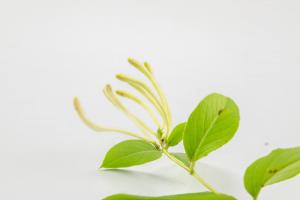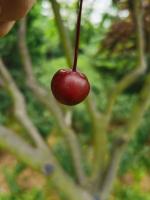How Do Trees and Plants Put On Mass
Plants and trees are essential to life on the planet Earth. They produce oxygen, absorb carbon dioxide, and provide habitats for numerous species. One of the most amazing things about trees and plants is their ability to put on mass. In this article, we will discuss the process by which trees and plants put on mass and the factors that influence it.
The Process of Mass Gain in Trees and Plants
Trees and plants put on mass through a process called photosynthesis. This process involves the use of sunlight, carbon dioxide, and water to produce carbohydrates and oxygen. The carbohydrates are then used to create new plant tissue, which results in mass gain.
Photosynthesis occurs in the leaves of plants and trees. Chloroplasts, which are specialized structures in the cells of leaves, contain chlorophyll, which is a pigment that absorbs sunlight. Chlorophyll captures energy from the sun and uses it to convert carbon dioxide and water into glucose, which is a type of carbohydrate. Oxygen is also produced as a by-product of photosynthesis.
The glucose produced during photosynthesis is then used to create new plant tissue. This tissue includes leaves, stems, roots, and flowers. In order for trees and plants to put on mass, they must produce more carbohydrates than they use. This excess glucose is stored in various parts of the plant, including the roots, stems, and leaves.
Factors That Influence Mass Gain in Trees and Plants
There are several factors that influence mass gain in trees and plants. These factors include sunlight, water, nutrients, and temperature.
Sunlight is crucial for photosynthesis to occur. Trees and plants require a certain amount of sunlight each day in order to produce enough glucose for mass gain. If they do not receive adequate sunlight, they may not put on mass as quickly or at all.
Water is also essential for photosynthesis to occur. If trees and plants do not receive enough water, they may not be able to produce enough glucose for mass gain. In addition, water is also required for the transport of nutrients throughout the plant.
Nutrients are essential for plant growth and mass gain. Trees and plants require a variety of nutrients, including nitrogen, phosphorus, and potassium. These nutrients are obtained from the soil and are transported throughout the plant via the water in the plant's tissues.
Temperature is also important for mass gain in trees and plants. Different species of plants and trees have different optimal temperature ranges for growth and mass gain. If the temperature is too high or too low, growth may be hindered.
Conclusion
Trees and plants have an amazing ability to put on mass through the process of photosynthesis. This process involves the use of sunlight, carbon dioxide, and water to produce glucose, which is used to create new plant tissue. There are several factors that influence mass gain in trees and plants, including sunlight, water, nutrients, and temperature. By understanding these factors, we can better appreciate the importance of trees and plants to our planet and ensure their continued growth and survival.

 how many times do yo...
how many times do yo... how many planted tre...
how many planted tre... how many pine trees ...
how many pine trees ... how many pecan trees...
how many pecan trees... how many plants comp...
how many plants comp... how many plants can ...
how many plants can ... how many plants and ...
how many plants and ... how many pepper plan...
how many pepper plan...






























